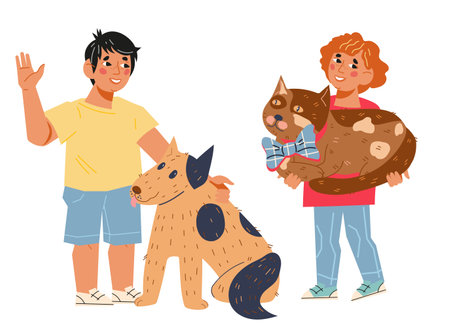Understand Why Pets Destroy Their Beds
If your pet keeps ripping apart their bed, you’re not alone. To stop this behavior, it’s important to first figure out why it’s happening. Pets often chew, scratch, or dig at their beds for a handful of common reasons. Boredom is a big factor—if your dog or cat isn’t getting enough mental stimulation, they’ll find ways to entertain themselves, and that often means destroying things around the house. Anxiety can also play a role, especially if your pet feels stressed when left alone or in new environments. For puppies and kittens, teething is another reason—they naturally want to chew to relieve the discomfort in their gums. And finally, lack of exercise can leave your pet with pent-up energy that comes out in destructive behaviors. By identifying what’s driving your pet to destroy their bed, you’ll be better equipped to address the root cause instead of just dealing with the aftermath.
Choose the Right Bed for Your Pet
Selecting a suitable bed is your first line of defense against pet destruction. Not all pet beds are created equal, and choosing the wrong type can make it much easier for your dog or cat to chew, scratch, or tear it apart. To prevent this, focus on beds made from durable, chew-resistant materials such as ballistic nylon, canvas, or heavy-duty polyester. These materials are tough enough to withstand sharp teeth and claws.
Size also matters. A bed that’s too small may frustrate your pet and lead to destructive behavior, while an oversized one might not offer the sense of security they crave. Look for beds that match your pet’s breed size and sleeping habits—some pets like to stretch out, while others curl up tightly.
American-made pet beds often feature reinforced seams and zippers, double-stitching, and premium fillings that maintain their shape longer. These qualities help ensure the bed survives even with energetic pets. Here’s a quick comparison to help you decide:
| Material | Durability Level | Best For |
|---|---|---|
| Ballistic Nylon | High | Heavy chewers, large breeds |
| Canvas | Medium-High | Moderate chewers, active dogs |
| Heavy-Duty Polyester | Medium | Cats, light chewers |
If you have a persistent chewer or digger, consider options with hidden or covered zippers and removable covers for easy cleaning. Investing in the right bed upfront will save you time and money—and keep your pet comfortable without constant replacements.

3. Provide Plenty of Exercise and Stimulation
If your pet is constantly tearing up their bed, it could be a sign they’re bored or have too much pent-up energy. Regular exercise is key—dogs need daily walks, and cats benefit from interactive play sessions. In the U.S., dog owners often use local dog parks to give their pups a chance to run freely and socialize, which helps burn off excess energy that might otherwise be directed at their beds. Don’t forget about mental enrichment! Puzzle toys are a great way to challenge your pet’s mind and keep them busy. Training sessions, whether you’re teaching basic commands or fun tricks, also provide valuable stimulation and build your bond. By keeping your pet active and engaged both physically and mentally, you’ll greatly reduce the chances they’ll resort to destructive behaviors like bed chewing or scratching.
4. Use Positive Reinforcement Training
If your pet has a habit of chewing or scratching their bed, positive reinforcement training is one of the most effective ways to correct this behavior. Instead of punishing your pet when they act out, focus on rewarding them when they do the right thing—like ignoring their bed or using it appropriately. American pet owners have found that this approach not only teaches pets to respect their bed but also strengthens the bond between owner and animal.
How to Apply Positive Reinforcement
Every time your pet leaves their bed alone or uses it gently, immediately reward them with treats, praise, or extra playtime. The key is consistency; rewards need to happen as soon as the good behavior occurs so your pet can make the connection. Over time, your pet will learn that good things happen when they don’t destroy their bed.
Examples of Rewards
| Reward Type | How to Use |
|---|---|
| Treats | Offer a small snack when your pet walks away from the bed without chewing or scratching. |
| Praise | Use an enthusiastic voice to say “Good job!” or “Good boy/girl!” immediately after the desired behavior. |
| Playtime | Give extra attention or a favorite toy after periods of good behavior around the bed. |
Consistency Is Key
Stick to your rewards system every day. Even if progress seems slow at first, consistent positive reinforcement is proven among American pet parents to change behavior over time. Avoid yelling or punishment, which can increase anxiety and make destructive habits worse. With patience and encouragement, your pet will eventually learn that leaving their bed intact leads to lots of love and rewards.
5. Redirect Destructive Behavior Appropriately
If you catch your pet chewing or digging at their bed, it’s important to stay calm and not yell or punish them. Instead, gently redirect their attention to a more suitable option, like a durable chew toy or a puzzle feeder. American-made chew toys are a great choice because they’re often designed for safety and durability, making them perfect for tough chewers.
For example, if your dog starts gnawing on their bed, immediately offer them a sturdy rubber bone or a Kong toy stuffed with treats. Praise them when they show interest in the toy instead of the bed—positive reinforcement helps teach them what’s okay to chew. If you have a cat that loves to dig and scratch, try providing an interactive scratching post or catnip toy nearby. When you notice destructive behavior starting, simply move their focus to these alternatives.
Consistency is key. Every time your pet starts destroying their bed, calmly intervene and provide the right outlet for their energy and instincts. Over time, most pets learn which items are off-limits and which toys are fair game. Remember, offering plenty of safe choices keeps your pet happy and your home (and their bed!) intact.
6. Protect the Bed with Deterrents
One of the most effective ways to prevent your pet from destroying their bed is by using deterrents that are designed to make chewing or scratching less appealing. Pet-safe sprays with bitter or unpleasant flavors are a popular option and can be found at major U.S. pet stores like Petco or PetSmart. These sprays typically contain ingredients that taste bad to pets but are harmless if ingested in small amounts. Simply follow the instructions on the bottle and lightly mist the bed, especially around the areas your dog or cat tends to target.
Textured Covers Add Extra Protection
In addition to sprays, consider using textured covers made from materials that pets generally dislike, such as plastic or certain rubberized fabrics. These covers can provide a physical barrier that discourages biting or clawing. Many American pet owners find these products easy to use and effective, especially for persistent chewers.
Consistency Is Key
For deterrents to work best, reapply sprays regularly according to the product’s guidelines and ensure covers stay securely in place. If you notice your pet trying to get around the deterrents, redirect their attention to approved chew toys or scratching posts.
Choose Products Designed for Pets
Always choose deterrent products labeled as safe for pets. Products sold at reputable U.S. retailers like Petco or PetSmart meet safety standards and are formulated specifically for dogs and cats. Avoid homemade solutions unless recommended by your veterinarian.
By combining deterrent sprays and covers with positive reinforcement and supervision, you’ll make it much harder for your pet to destroy their bed—and much easier for everyone in your household to enjoy a peaceful night’s sleep.

